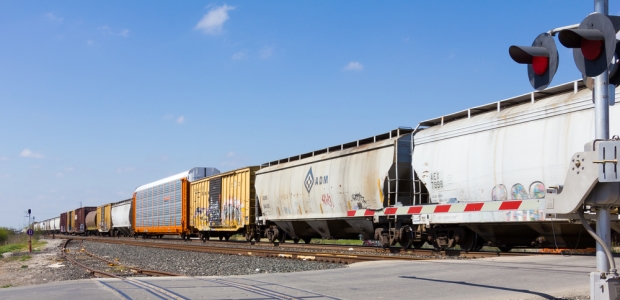
FRA Proposes Two-Person Train Crew Requirement
The rail operations that could still utilize one-person crews would be low risk -- that is, they are not carrying large volumes of hazardous materials, traveling at high speeds, or putting passengers on passenger trains at risk, according to the rule.
A rule proposed March 14 by the Federal Railroad Administration would require a minimum of two crew members for all railroad operations, except for those FRA believes do not pose a significant safety risk for rail employees, the public, or the environment by using a one-member crew. FRA also wrote into its proposed rule two options for how a rail operator could petition to retain one-person crews in its operations or begin using one-person crews.
The rail operations that could still utilize one-person crews would be low risk -- that is, they are not carrying large volumes of hazardous materials, traveling at high speeds, or putting passengers on passenger trains at risk, according to the rule.
FRA is accepting comments on its rule for the next 60 days. Stakeholders can submit a comment by visiting www.regulations.gov and searching for Docket No. FRA-2014-0033.
FRA indicated in the rule it is concerned that, as positive train control is implemented, railroads may expand their use of one-person crews without considering safety risks or implementing risk management strategies that FRA considers necessary.
The rule's explanatory text mentions the Lac-Megantic, Quebec, disaster, where multiple tank cars carrying Bakken crude oil derailed in the town and ignited, killing at least 47 people, as a recent incident that raised crew size safety issues.
The Association of American Railroads' president and CEO, Edward R. Hamberger, issued a statement opposing the FRA rule. "Safety is this industry's number one concern, but there is simply no safety case to be made for a regulation that requires two-person crews, especially where Positive Train Control is fully operational," he said. "Worldwide, trains safely operate with one person in the cab, including here in the United States with passenger and commuter trains and some short line freight railroads. Major European railway systems running many mixed freight and passenger trains per day have safely implemented single-person train crews. Coming from an administration that champions smart, data-driven regulations, it is inexplicable how this proposal was approved by the President's Office of Management and Budget. Even the FRA concedes they have no 'reliable or conclusive statistical data' to suggest that two-person crews are safer. I encourage the FRA to reexamine the facts and exercise sound regulatory judgment before finalizing a rule that lacks empirical support."
Hamberger said Class 1 freight railroads remain committed to two people in the cab for trains operating on mainline track that is not equipped with Positive Train Control, which will be in operation for 60,000 out of the nation's 140,000 miles of freight rail lines.
"PTC is designed to provide continuous monitoring of train operations to protect against human error in controlling train speeds and movements. This is exactly the kind of safety redundancy through technology for which the FRA has long advocated," he said.